By Steve White
Heavy truck accidents are similar to commercial fires in that they are low-frequency events. They require a different approach when it comes to personnel, tools, and tactics. To expand, fire departments respond to more single-family dwelling fires than commercial building fires, just as they respond to more vehicle accidents with entrapment involving passenger vehicles than heavy trucks.
Although basic functions of fire attack at residential and commercial fires are similar–applying water to extinguish the fire and ventilation to remove heat and smoke–they differ in their particulars: hoseline size/length and the tools used for ventilation and forcible entry will change. History has taught us to not take a residential fire mindset to a commercial building fire. That can be difficult for many firefighters, since we simply go to more house fires. We have to fall back on training and experience to break out this mindset. When the majority of fire departments simply have limited fire duty, training is the key, and that is certainly within our control.
Performing heavy truck extrication is no different. During this series on heavy truck extrication, we want to stress this fact: You can’t take a small-vehicle approach to rescues involving heavy trucks. From staffing, staging, and vehicle size to tools, tactics, and construction, heavy truck extrication is considerably different than a tool job involving a car. It’s also crucial to keep things as simple as possible so that the street firefighter can make smart decisions and easily recall important information for these low-frequency rescue events.
With rescuer safety being our number one priority, it is critical that the cargo always be identified prior to approach and start of operations. Follow local, state, and federal rules for hazardous materials identification and mitigation. Basic rules such as approaching uphill/upwind, scanning the vehicle for placards, identifying the container type, and simply asking the driver what’s in the truck are safe and effective practices.
Standard rescuer personal protective equipment includes helmet, eye protection, ear protection (as needed), steel-toe boots, and work gloves. Structural firefighting gear or rescue gear is commonly worn for extrication. Flash-resistive clothing with the ability to protect the rescuer from blood-borne pathogens is recommended.
For patient safety, hard and/or soft protection should always be used to protect the patient. Hard protection could be a rigid material such as a pediatric backboard or a section of plexiglass. This is typically placed between the patient and a rescue tool operating in close proximity to the patient. Soft protection is considered a flame-resistant extrication blanket to shield the patient from debris such as glass.
We break trucks into three types:
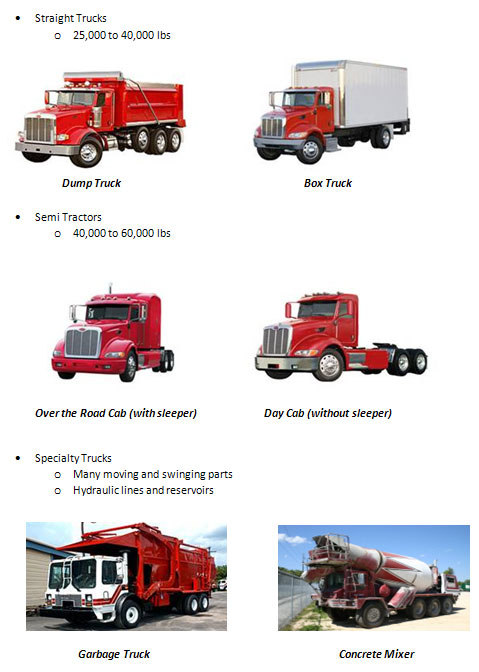
Heavy trucks are full-framed vehicles with two steel frame rails running from the front to the back, which is completely different from unibody or space frames found in most passenger vehicles. Drive axles are at the rear of big trucks, not on the front axle.
Basic cab designs include cab-over (commonly referred to as “flat nosed”) and conventional (‘long-nosed”). Cab-over tractors are slowly disappearing from the roads, as the conventional cab is a smoother ride and easier for mechanics to work on.
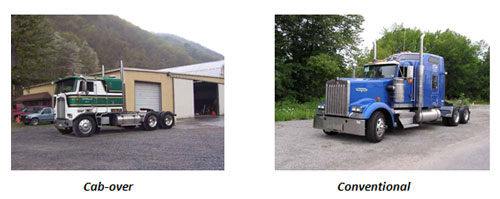
Weight and height are instant challenges to rescuers when working with trucks. Understanding weight is important to properly stabilize the truck. The legal maximum weight limit for an over-the-road truck is 80,000 lbs. They can be heavier, but must have a permit if they are above 80,000 lbs.
The windshield is laminated glass and typically held in place by a gasket. It can be removed by pulling the center bead of the gasket with a pair of pliers or small pry tool. Once the center bead is pulled, the gasket and windshield become loose, which allows the windshield to be removed as one piece. This reduces the small shards of glass and glass typically produced when using a standard window saw. A window saw can be used to cut the windshield, but the rescuer should avoid inhaling the glass dust.
Side and rear glass is typically tempered and can be removed with a standard window punch, but some trucks may have a Lexan-type window which is difficult to remove.
Locating the batteries can be challenging. Start with the driver side at the step used to get into the cab, then work your way towards the rear. Looking along the frame rail will typically lead you to the batteries. A box with big wires coming out of it or a red (positive) jump-post on the side of the box is what you will be looking for, particularly if the truck is on its side. Rubber “T” handle straps hold the battery cover in place.
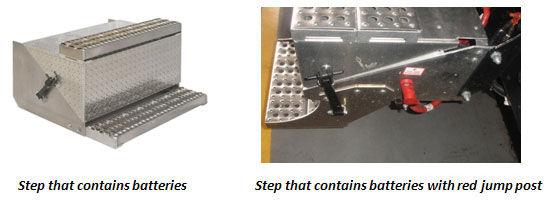
Fuel tanks are typically held in place by metal bands attached to the frame. For semi-cabs, these could contain as many as 300 gallons of diesel fuel and be mounted on both sides of the truck. During size-up, rescuers must pay close attention to the tank, as hydraulic oil can also stored in side-mounted tanks that can be mistaken for fuel tanks. The hydraulic tank is typically smaller than a fuel tank and may have a pressure relief valve on the top on the tank. There will also be a hydraulic line that does not run to the truck motor.
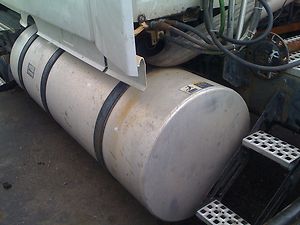
Standard diesel fuel tank
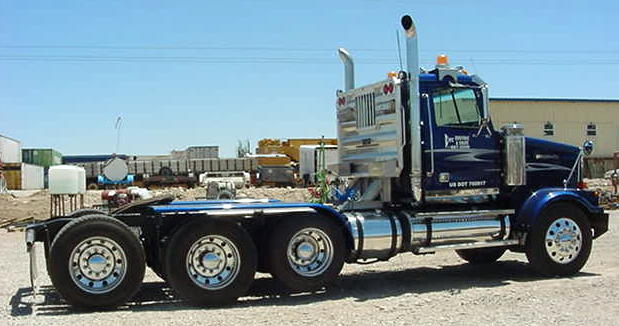
Just after the front (steer) wheel is a diesel fuel tank, but just after the fuel tank is a separate (smaller) hydraulic tank
Truck types and configurations will vary in each region of the United States. For example, rear discharge concrete mixers on a conventional chassis are common on the East Coast, yet front discharge mixers on custom chassis are common in the Midwest. Rescue personnel should have a general working knowledge of the trucks commonly found in their response district.
Having a base knowledge of heavy-truck types and their associated hazards is essential for rescuer safety and operational success. In future segments we will address stabilization and gaining access, which will tie in the information presented in this segment.
In the next segment we will cover air-ride cabs and suspension systems, as well as air brakes for trucks, cabs, and trailers.
STEVE WHITE is a 22-year veteran of the Fishers (IN) Fire Department, where he is a battalion chief and oversees the technical rescue program. He is the team leader for the Hamilton County Technical Rescue Team; a member of the Indiana Fire Chief’s Association; co-chair of the Technical Rescue Section; and a member of the IDHS rescue certification task force, working to develop the state’s technical rescue certification program. He was the lead instructor for the 2007 and 2008 FDIC H.O.T. Heavy Truck Extrication program. As a lead instructor with Advanced Rescue Solutions, he has taught fire and rescue classes nationally for the past 17 years as an IFSAC-accredited instructor II/III.

